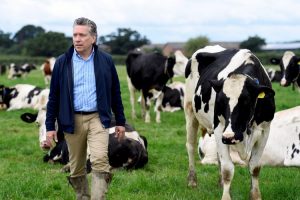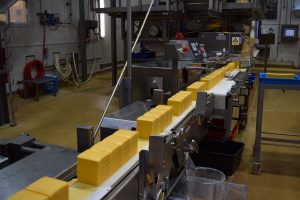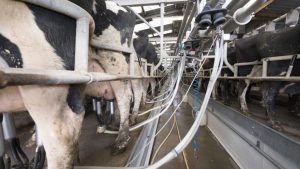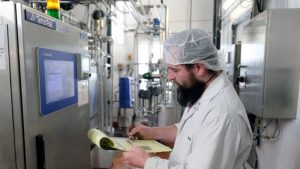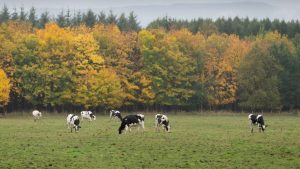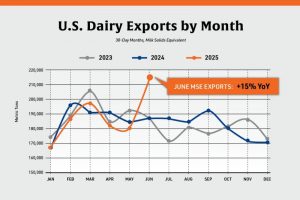
Initial results from CIEL-funded, Nottingham University and Mole Valley Farmers research, show that increasing the proportion of DUP in heifer diets from 12 months of age to above the industry ‘norm’ has a positive impact on growth.
The next stage of the research will look at the impact on mammary gland development, milk yield, fertility and nitrogen use efficiency.
A total of 76, 12-month-old, high genetic merit dairy heifers were offered one of two diets from 12 months of age for 84 days. The base diet was a 50:50 mix of grass and maize silage. Concentrate was fed at 2.5kg per head per day, with the makeup changed to include either a lower DUP concentration, which was a ‘typical’ heifer diet fed on UK farms, or a higher DUP concentration.
The high DUP diet supplied higher levels of metabolisable protein and over double the amount of DUP than the low diet. The higher DUP diet included prairie meal, protected soya, wheat and sugar beet, while the lower DUP diet consisted of beans, wheat, barley and sugar beet.
“If farmers aim to raise growth rates from 0.8kg to 1kg per head per day by increasing the DUP concentration in their heifer rearer above a typical diet, heifers could calve in 50 days sooner. This means they eat less over the rearing period,” he explains.
So, although the feed cost was £30 per tonne more expensive on the higher DUP diet, feed intakes were 125kg per head lower.
“As a result, feed costs per head were £25 lower on the higher DUP diet. This means there’s the potential for farmers to save money, boost heifer performance and also have a positive impact on their farm’s carbon footprint as calving closer to 24 months also results in fewer heifers needing to be carried on farm. It’s all part of our drive as British farmer owned cooperative to help farmers improve their productivity, profitability and sustainability.”
Dr Jean Margerison, associate professor of ruminant nutrition at Nottingham University says the initial results are fantastic.
“Improving protein feeding for growing heifers clearly provides farmers with the opportunity to reduce age at first calving, while having a positive effect on the growth and body composition of the animal,” she says.
“The full results on the internal structure of the mammary gland and its subsequent function, which includes milk yield and nitrogen efficiency will be fascinating.
Effect of digestible undegradable protein (DUP) on heifer growth rates (Nottingham University and Mole Valley Farmers’ trial)
High DUP diet
405g per day of DUP in the total diet
(26% crude protein in the concentrate) Low DUP diet
165g per day of DUP in the total diet
(14% crude protein in the concentrate)
Initial liveweight (kg) 400 399
Final liveweight (kg) 493 477
Liveweight gain (kg per day) 1.21 1.01
Hip height gain (inches) 3.9 2.3
Mole Valley Farmers’ head of feeds, Dr Chris Bartram says: “Those heifers fed the higher DUP diet achieved average growth rates of 1.21kg per head per day, versus 1.01kg per head per day on the low DUP diet. They also had greater stature, gaining more hip height. This suggests that feeding higher DUP could help farmers boost heifer performance and make them better able to hit the target age at first calving of 24 months.”
As a result, Mole Valley Farmers has designed Heifer Rearer 24 – a new high DUP, 24% protein feed created to achieve daily live weight gains of over 1kg. The product includes biotin for healthy hoof development and is available as a compound or blend.
Dr Bartram used the research findings to estimate the potential cost implications of feeding this higher DUP diet from 9-15 months of age. Recognising that the daily live weight gains of over 1kg per head per day achieved under experimental conditions were phenomenal, he adjusted the growth rates to more realistically match farm targets.




